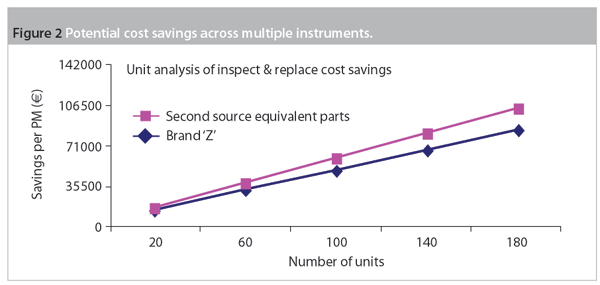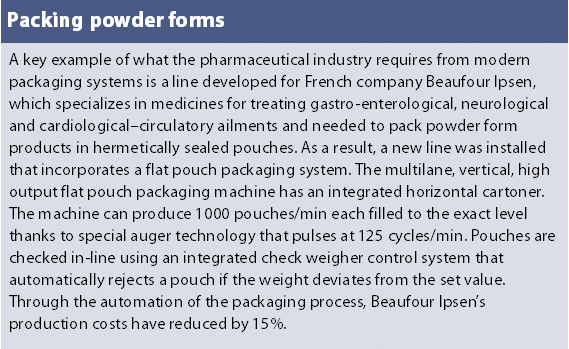USP faces up to analytical reality
Pharmaceutical Technology Europe
When the United States Pharmacopeia (USP) announced a delay to the proposed implementation date of July 2007 for General Chapter <467> Residual Solvents, pharmaceutical companies supplying the US market welcomed the interim reprieve. However, meeting the new implementation date will prove challenging as the requirement applies to all existing products covered by the USP and companies must still work hard to prepare for July 2008 when <467> will finally come in.
The appropriate choice of solvent for manufacturing pharmaceutical actives can significantly impact yield, crystal form, purity and solubility. Hence it is important to the efficiency and quality of production that the pharmaceutical industry has reasonable flexibility in its choice of appropriate solvents. However, solvents are also a main category of impurities that can occur within pharmaceutical products. As they have no therapeutic benefit and, moreover, may be detrimental to health, it is important, so far as is practicable, to remove all traces from the finished product to meet the relevant control requirements. Unfortunately, that can be easier said than done. Complete removal may not always be possible so it is essential to test for residual solvent levels in the final product and/or the components of the product. Therefore, testing of this nature is critical to controlling and ensuring that pharmaceutical products on the market meet the predefined criteria of regulatory limits.
That said, according to the United States Pharmacopeia (USP), testing of a finished product may not always be necessary. It is only required for solvents likely to be present; that is, those that have been used in the final production step or have been used (and not removed) in earlier steps. If it can be shown that the cumulative impact of residual solvents used in the production of components does not exceed the acceptable limits, there is no further need to test for residual solvent levels in the finished product. Similarly, and sensibly, if a solvent has not been used in any stage of the process, and could not be formed as part of the process, then there is no need to test for it.
However, where solvents are used or potentially formed at any stage, or where calculation from components suggests the limits might be exceeded, further testing is required using reliable, validated procedures.
This is, essentially, the rationale behind USP <467>, which seeks to harmonize test standards in accordance with the model already adopted by the European Pharmacopoeia (EP). It aims to prescribe standard test methods for three classes of solvent:
- Class 1 — solvents that are known to cause unacceptable toxicities.
- Class 2 — solvents associated with less severe toxicity.
- Class 3 — less toxic solvents.
It should be noted at this point that the best practice expectation is that Class 3 solvents should be used preferentially to manufacture all drug substances, excipients or drug products. Class 1 and 2 solvents should be avoided unless their use can be strongly justified in a risk-benefit assessment. However, as noted above, there are some syntheses in which the choice of solvent is critical to the eventual outcome, so it is not feasible to exclude solvents from Classes 1 and 2.
Delays to USP <467>
An essential problem in defining a standard test method for identifying residual solvents is that just as one solvent is not suited to every synthesis, so it is difficult to develop a single method that is suited to testing every solvent/product combination.
It is unsurprising, therefore, that USP <467> has had a somewhat faltering progress, having first been scheduled for introduction on 1 January 2007, only for implementation to be delayed until 1 July 2007 and then further delayed with a proposed implementation date of 1 July 2008.
This delay recognizes the time and resource impact faced by manufacturers in trying to apply a common test to drug substances, excipients and drug products in the USP-NF (National Formulary). In particular, there have been difficulties reported with water soluble articles, where sensitivity has been poor. These challenges are compounded when analysing water insoluble articles where the combination of low sensitivity and peaks arising from minor impurities in the chosen solvent (dimethylformamide/dimethylamines) obscures chromatographic detail.
General Chapter <467> does provide some scope to optimize the chromatographic system to effect improvements in sensitivity and resolution, which should assist in producing more reliable results. For example, the split ratio may be modified to improve sensitivity, and options are indicated for the choice of column diameter and phase thickness, which will affect resolution. In addition, the chromatographer may consider optimizing the pressurization time and carrier flow for their specific systems where such factors will ensure adequate sampling volumes with the avoidance of double peaks often seen where flow has be inadequate.
Alternative approach
Despite the obvious attraction of having a prescribed and standardized procedure for all companies to follow, it is arguable that it is often more effective to develop and validate specific screening methods that target solvents used for a particular product and process. Indeed, the revised chapter indicates the need for companies to develop their own validated methods for the "problematic solvents" including formamide, 2-ethoxyethanol, 2-methoxyethanol, ethylene glycol, N-methylpyrrolidone and sulfolane, which are not readily detected by the headspace conditions described in <467>. In addition to these solvents, others not listed in the USP may also require specific methodologies and subsequent validation.
The essential point here is that these methods must be validated, which can be time consuming and use valuable resources. However, as a laboratory experienced in method development and validation, RSSL Pharma believes that the impact of short-term expense and the effort of development/validation pays off in the longer term. The specific method also generates a degree of confidence that may not be gained from applying a standard method that may prove less than satisfactory.
The validation process
The validation guidelines from the USP,1 International Conference on Harmonisation (ICH),2 and FDA3,4 provide a framework for performing such validations. Despite there being general agreement about what type of studies should be done, there are diverse approaches to performing validations depending on the final intended use. The process of validating a method cannot be separated from the actual development of the method conditions and prevalidation studies are typically applied to determine if the method conditions are acceptable. The results of any such prevalidation studies may indicate that a method change is necessary before submitting the method to full validation. Hence, the development and validation of a new analytical method can often become an iterative process.
To ensure a residual solvent method is fit for its intended purpose and suitable for submission to the regulatory authorities, method validation must include studies to demonstrate the following criteria;
- Specificity — the method can accurately measure the solvent residue response in the presence of all potential sample components such as sample matrix materials, impurities, degradants or other chromatographic artifacts.
- Linearity — the solvent residue response is linearly proportional to concentration.
- Accuracy — that the measured value is as close as possible to the true or accepted reference value for the sample.
- Precision — there is minimal scatter in the results obtained from multiple analyses of a homogeneous sample.
- Range — results satisfy the linearity, accuracy and precision criteria across a range of concentrations.
- Detection limit — the lowest residue concentration that produces a response detectable above the noise level of the system.
- Quantitation limit — the lowest level of residue that can be accurately measured.
- Robustness — the ability of the method to remain unaffected by small changes in method operating parameters such as oven temperature and programme, carrier gas column flow rate and injection temperature volume.
Once these validation studies are complete, the development scientists should be confident in the method to provide good quantitation in their own laboratories. Further validation studies may be required to ensure the method will work well in other laboratories, where different operators, instruments and reagents are involved. This will require a transfer validation procedure, which can take several forms such as comparative studies to preset criteria, partial or full revalidation, or verification to demonstrate specificity and precision according to the conditions of use.
Performing a thorough method validation can be time-consuming. Any pharmaceutical manufacturer looking to develop its own methods in preference to the standard methods defined in EP and USP would be well-advised to initiate the development as soon as possible in the drug development process so that the method is available for use when needed.
Conclusion
The delay in implementing General Chapter <467> has effectively given the industry an extra year to address the issue of problematic solvents, and to develop and validate its own methods where necessary. However, the sheer number of articles that require testing is sure to put significant pressure on pharmaceutical manufacturers as they seek conformance with this new standard, and is likely to mean a busy year ahead for the development laboratories.
Elma Brennan is head of pharmaceutical division, RSSL Pharma (UK).
References
1. Pharmacopeia 23, United States Pharmacopeial Convention, Inc., pp 1982–1984 (1994).
2. International Conference on Harmonisation, Draft Guideline on Validation of Analytical Procedures: Definitions and Terminology, Federal Register, Volume 60, p 11260, 1 March 1995.
3. Reviewer Guidance, Validation of Chromatographic Methods (CDER, US FDA, Rockville, MD, USA, 1994). www.fda.gov/CDER/GUIDANCE/cmc3.pdf
4. Guideline for Submitting Samples and Analytical Data for Methods Validation (US FDA, Rockville, MD, USA, 1987). www.fda.gov/cder/guidance/ameth.htm




